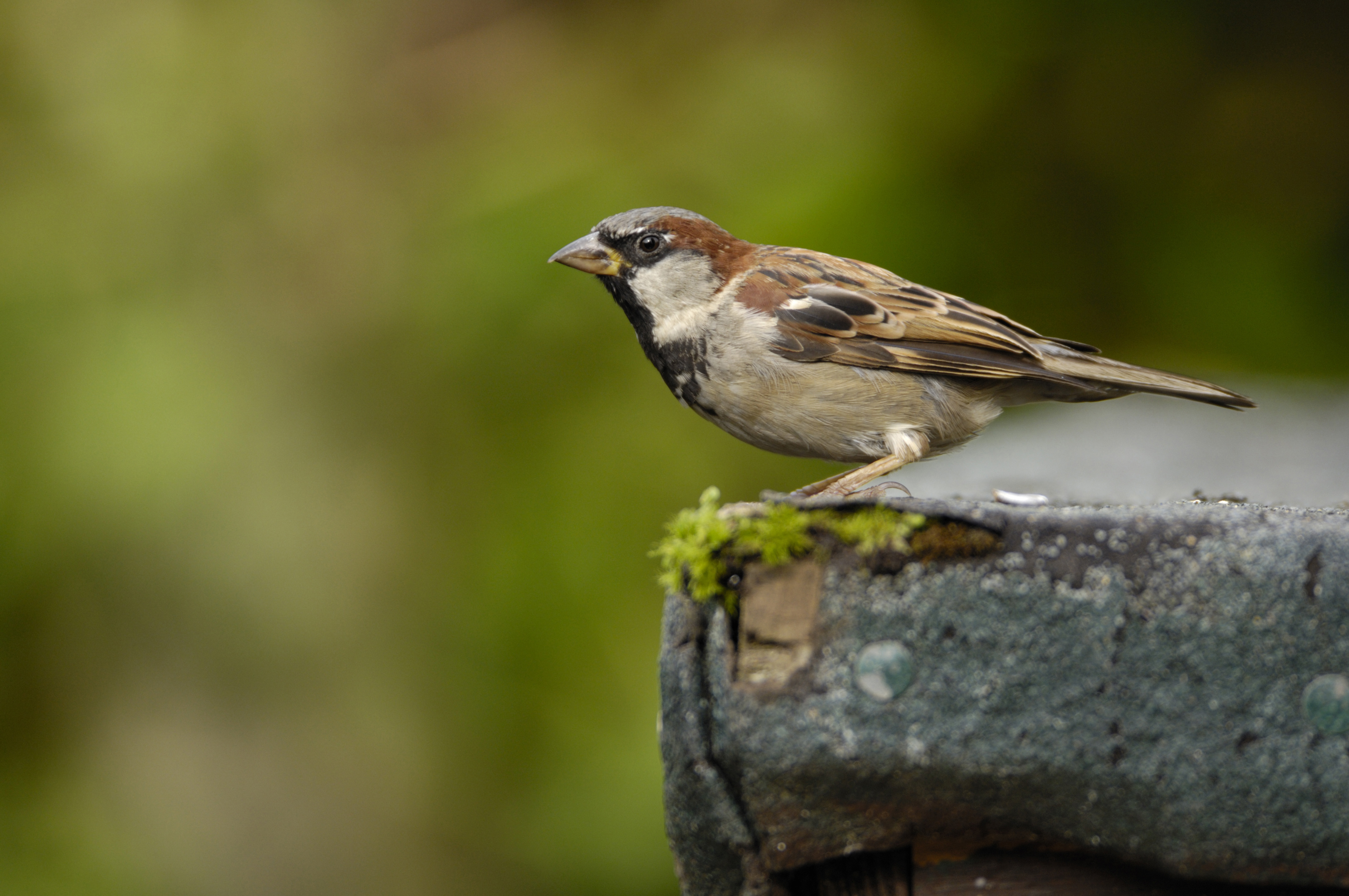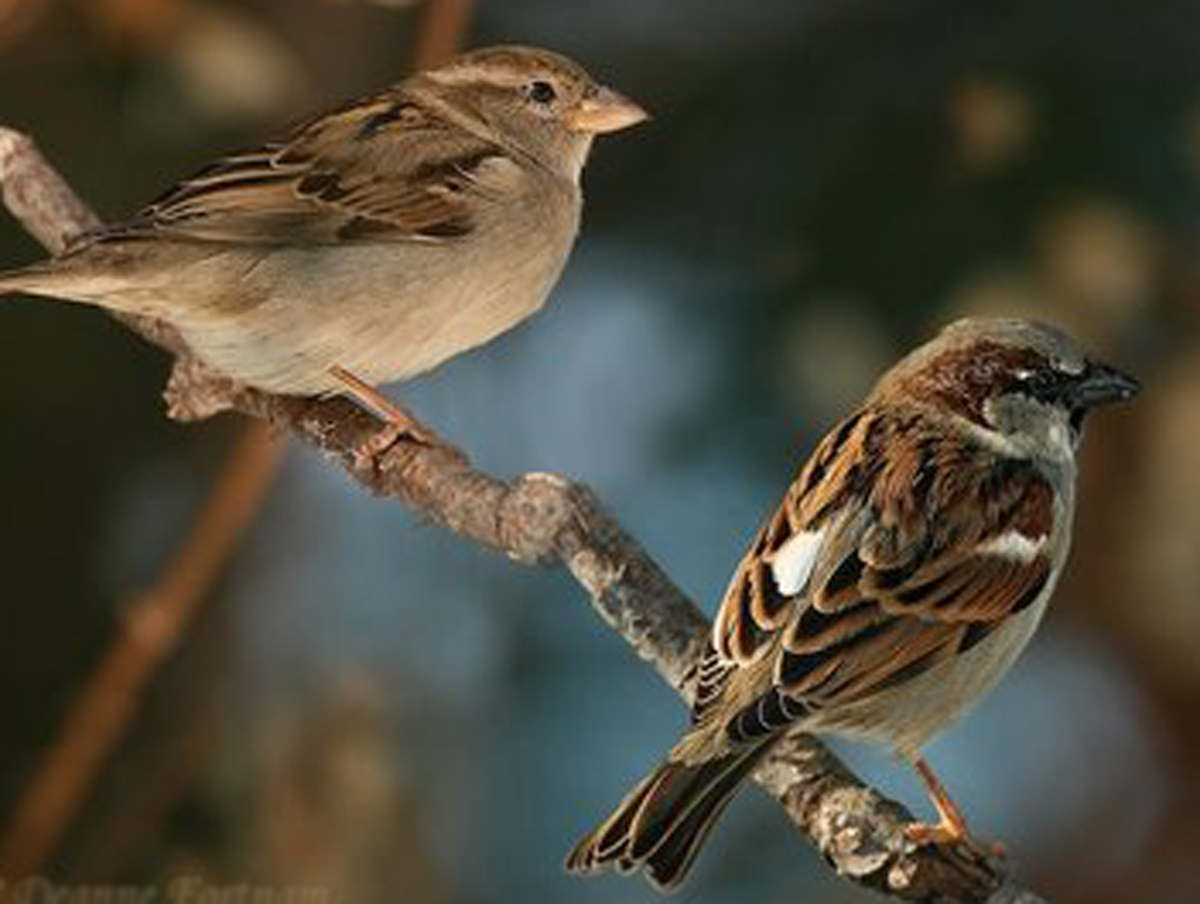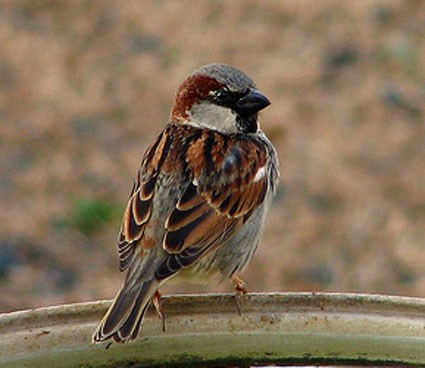
Passer domesticus
TAXONOMY
Fringilla domestica Linnaeus, 1758, Sweden. 11 subspecies.
OTHER COMMON NAMES
English: English sparrow; French: Moineau domestique; German:
Haussperling; Spanish: Gorriуn Comъn.
PHYSICAL CHARACTERISTICS
5.5–6.3 in (14–16 cm); 0.7–1.4 oz (20–40 g). Male has a gray
crown bordered by chestnut and a small black bib. Female drab
brown. Juvenile similar to female but paler.
DISTRIBUTION
North Africa and Eurasia to limit of cultivation, except for
Thailand east to Japan. Through introductions from the midnineteenth
century onwards is now present throughout most of
the inhabited world.
HABITAT
Almost entirely associated with humans.
BEHAVIOR
Mainly sedentary, living in small colonies throughout the year.
FEEDING ECOLOGY AND DIET
Seeds and household scraps. Young reared largely on invertebrates.
REPRODUCTIVE BIOLOGY
Preferred nest site is a hole in building or tree, though also
builds free-standing domed nest in trees. Up to five clutches of
two to five eggs per year. Incubation 11–14 days; fledging
14–16 days. Both sexes take part in breeding activities.
CONSERVATION STATUS
Major decline in western Europe at end of the twentieth
century; but not considered threatened by the IUCN as of
2000.
SIGNIFICANCE TO HUMANS
Generally regarded with affection, but can be a pest of cereal
cultivation.
Other popular Animals
Photo Gallery of - House sparrow




 Animalia Life
Animalia Life